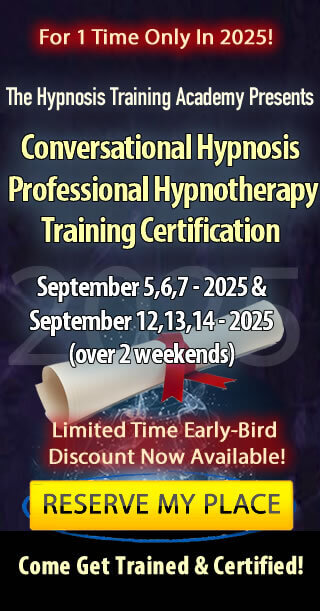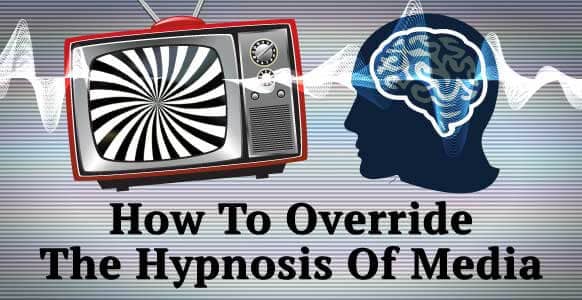
As a hypnotherapist, your words, tone of voice, volume, rhythm and timing are the tools of your trade.
So to become a true master when it comes to the art of using hypnotic communication – it takes much more than the usual language patterns of everyday speech.
All too often, the time between a subject entering the therapy room, and them being in a deep trance doing change work, can be a long and sometimes stressful, anxious and uncomfortable journey.
This is because these sessions are not always successful.
While suggestions to relax, close their eyes and go deeper are being made – the subject has a difficult time relaxing and getting into a trance because many times the session is very scripted. The hypnotherapist leaves the subject out of the equation altogether.
The subject doesn’t go into a deep trance and the hypnotic changes do not last – if they’re even effective at all.
The ineffective hypnotherapist then suggests that the subject is just one of those people who can’t be hypnotized – or something equally as ridiculous – to cover for their lack of hypnotic skill and understanding.
The subject leaves believing the therapist and is disappointed, feeling like there’s something wrong with them.
Instead of looking forward to a lifetime of using the gifts of hypnosis to make their lives better and more successful, they’re now cursed and denied all help from that avenue because they think they can’t be hypnotized.
But unless you have some form of brain damage, all people can reach a state of hypnotic trance. This is because you do it naturally every day. As a matter of fact, you couldn’t survive without the ability to enter trance and connect with your unconscious mind.
A hypnosis session is an interaction between two people that relies on the moment-by-moment communication happening during this two way street in order for it to be successful.
Reading a script or reciting a memorized script at a subject has a dismal failure rate because this feedback loop of communication doesn’t exist.
How can you possibly tell where your subject is at with regard to accepting or rejecting your suggestions if you have no feedback?
If you’re looking at a piece of paper rather than at them, or if you’re afraid to have your subject talk to you while they’re in trance for fear that they’ll “pop” out of it – there is no feedback.
Once you’ve lost your subject and their conscious mind’s critical factor kicks back in, nothing you say after that point has any effect. If this happens early on in a session, you’re talking or reading to a closed door.
So instead, how can we make our subject comfortable, open their mind to the “yes room” and make them eager to experience the hypnotherapy session right from the first moment they arrive?
The Comfort of Conversational Hypnosis
A subject walks into the therapy room and is instantly put at ease with what seems like the normal chit-chat conversation they’ve been used to all their lives.
As this comfortable conversation continues, they begin to feel more and more relaxed for some reason, more drawn to this charismatic individual speaking with them.
Their trust and comfort continues to grow; it’s as if they’ve known this therapist all their lives. They trust them and are open and comfortable talking about the issue they came to work through.
As they discuss the problem, at some point totally unaware of it on a conscious level, they slip into a very comfortable deep trance that just feels so good. Their eyes may or may not close. As the therapist works with them throughout the session, their problem seems to resolve itself naturally and easily.
There’s lots of communication between the subject and the therapist, both verbally and non-verbally throughout the session. Near the end when the problem is resolved, the hypnotherapist tests, re-tests and then re-tests again that all the suggestions have been accepted and that nothing unexpected will interfere with the changes.
At the end of the session the subject is brought back into total waking consciousness feeling absolutely fantastic. Problem resolved and energized – with deep and profound hypnotic gifts attained during trance that will later unfold over time.
The experience leaves the subject happy and wanting to come back and resolve more issues in perhaps another part of their life.
They know they have an ally, someone they can trust, who’s on their side and has the skills to help them create the profound changes they’re looking for.
They have no doubt that the session was a success, the changes have been made, and that Conversational Hypnosis is easy and comfortable.
Many subjects actually have a hard time believing how simple it was to be free of what used to seem like such a huge problem.
They now see hypnosis as a force for good in their lives and will call a hypnotherapist when they need that extra ally to help them with a problem.
The Power of Conversational Hypnosis
The use of language, evoking the emotions of the unconscious mind (where all emotions reside) has been the gift of orators and storytellers for millennia.
How many of us enjoy a great book, where the author’s magic in spinning words into tales takes us along on the journey of the hero or heroine as if we were right there?
We get lost in the tale. The characters are known to us, the sounds, tastes and smells are all around us. Nothing else exists.
Then someone startles us by calling our name and we land with a thump back in our world, a little disoriented as if called from a far land.
This is exactly the experience your subject will have when you use the art of Conversational Hypnosis in your session.
Totally absorbed in you and your words, along on the great journey through their own mind, discovering, being surprised, delighted, facing the dragon and conquering it and coming back home victorious.
Learning to be that consummate master wordsmith, who takes a subject’s hypnotherapy experience from the dark ages to the ease and comfort of our modern world doesn’t take years either.
In less time than you’d imagine, you can guide your subject effortlessly through their hypnotic journeys – helping them solve their problems by turning them into something they can gain wisdom from and release.
Conversational Hypnosis is the result of you, the hypnotherapist, accessing your unconscious mind by going into trance first and then accessing the unconscious mind of your subject.
The entire interaction is a conversation at the deepest level of the unconscious, an interaction between two deeper minds that have the ability to understand and solve any problem and undo any old programming.
All of the communication skills you learn in Conversational Hypnosis – Power Words, Universal Experiences, Hypnotic Word Patterns, Emotionally Charged Words, tonality, timing and the H+ State Of Mind, are learned unconsciously first.
This type of learning is called Intrinsic Learning – which is the natural way of learning you were born with.
You will never need a script again as you have to use your conscious mind to read a script and your conscious mind is NOT the mind you want to be using while engaged in hypnotherapy. It has no ability to help anyone!
Working at the unconscious level while doing Conversational Hypnosis allows you to be totally aware every moment of what’s happening inside your subject.
Your subject is your lead to where they need to go; using your hypnotic language to respond to their cues, what they’re seeing, feeling or experiencing.
This is because you have your own interpretation of every word in your vocabulary. Your interpretations are directly associated – linked – to your experiences. You have your own archetypal symbols that you respond to. In short – you are a book of life that is unique.
Even though you may have some similar personality characteristics to another person, how you represent those at the unconscious level symbolically will be absolutely different.
For example, if you use words such as strong, powerful, killer, buns of steel, six pack abs, to refer to a person’s new body shape – they may respond well by doing more exercise. But often the demographic these words would be limited to are young males.
If you were to use the same words with a forty-year-old woman who just wants to keep up with her kids and have a little more energy – you’ll lose her; those words have no importance and mean nothing to her.
And equally so, if you have a script that talks about filling your body with white light while going to a tropical oasis and relaxing in a pool under a waterfall – the number of people you will have success with may also be small.
Many people will have NO connection to any of those things that have emotionally impactful, internal associations to you, for example.
But one of the most powerful attributes behind the success of Conversational Hypnosis is learning to elicit and use your subject’s own trance themes, their own emotionally loaded words, symbols and phrases.
Watching a subject literally light up by using the very words that are already powerful in their unconscious mind makes learning Conversational Hypnosis worthwhile alone, and will ensure your success with subject after subject.
No more scripts or hit and misses. No more guessing or wondering if your suggestions are being taken on board. And no more wondering if your subject is in a deep enough trance – just an authentic interaction at the unconscious level using Conversational Hypnosis that gets the change done – every time.








![Yogic Breathing For Hypnosis: 3 Easy Techniques To Ground & Relax Your Clients Before Inducing A Hypnotic Trance [Includes Infographic] Yogic Breathing For Hypnosis: 3 Easy Techniques To Ground & Relax Your Clients Before Inducing A Hypnotic Trance [Includes Infographic]](https://hypnosistrainingacademy.com/wp-content/uploads/2019/05/yogic-breathing-for-hypnosis.jpg)





